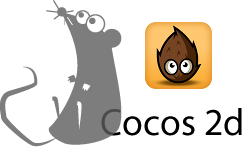When we decided to carry on this new adventure in the mobile games development, one of the important questions was choosing for what devices we will be going to develop. One of the family devices that hold a wide percentage of mobile market is the Apple mobile devices. So we focus firstly in this niche market.
In order to develop our first game, we look for a simple framework, easy to use and by zero cost, if it was possible. Several develop environments was checked. The first one was Cocoa and Quartz, the Apple’s development tool. This tool was discarded due to the difficult management of animations and their workflow. Moreover, some studies explain some performance and scalability problems.
After discarding this option, we began to research about more powerfull and feasible tools. A lot of tools and frameworks exist for iOS development specifically for bidimensional games development. For our purpose we chose these three tools: Unity Framework, Adobe Air and Cocos2d.
Firstly we install the evaluation version of Unity Framework. We liked its power and its multi-platform nature, but it was too complicated for our projects and we could not assume its learning curve.
Adobe Air was the next option. We liked everything of Adobe Air because we already knew the Action Script language, moreover is a multi-platform environment, and finally the development process with it is fast and intuitive. However, we had doubts about its performance. We develop a prototype of our first game and some interesting conclusions appear: a not very good performance on Android and a horrible performance on iOS. It is possible that this performance will be improved in the future, but this makes us to discard this tool too. We will publish a post tacking in depth these performance features.
Finally, the last tool we proved was Cocos2d. This is a framework based on Objective-C, what was an initial handicap for us since we had not programmed in this language. However, this framework worked out easier than we thought. It is very easy to use, to install and to develop. Moreover the documentation in its web is wide enough to learn it without problems. Furthermore, it has another important advantage, it is open source.
Some of the features that this framework offers are: graphics loading, tactile control, accelerometer, iphone3G/S, iphone4 and iPad compliance, etc. What is the result of this work?? You can see it soon in the AppStore.
